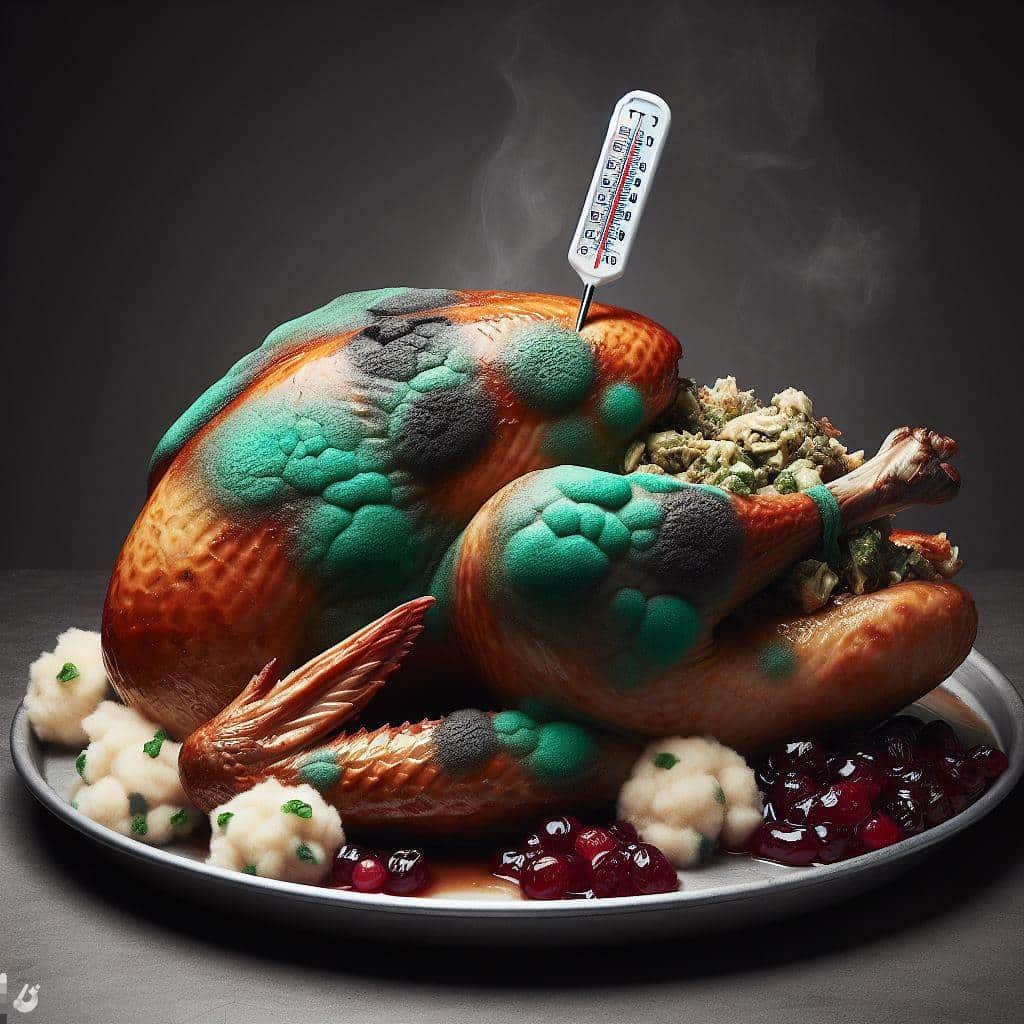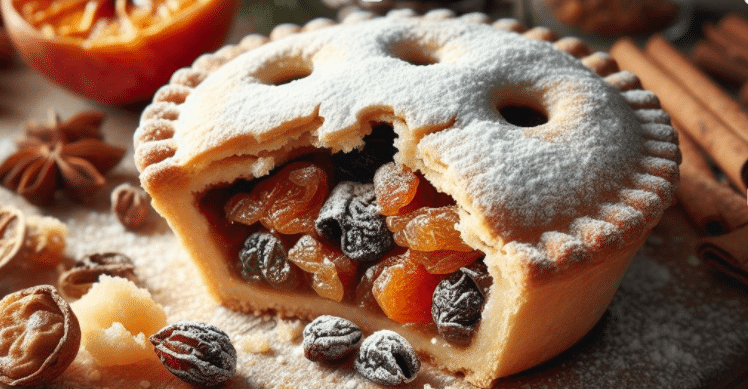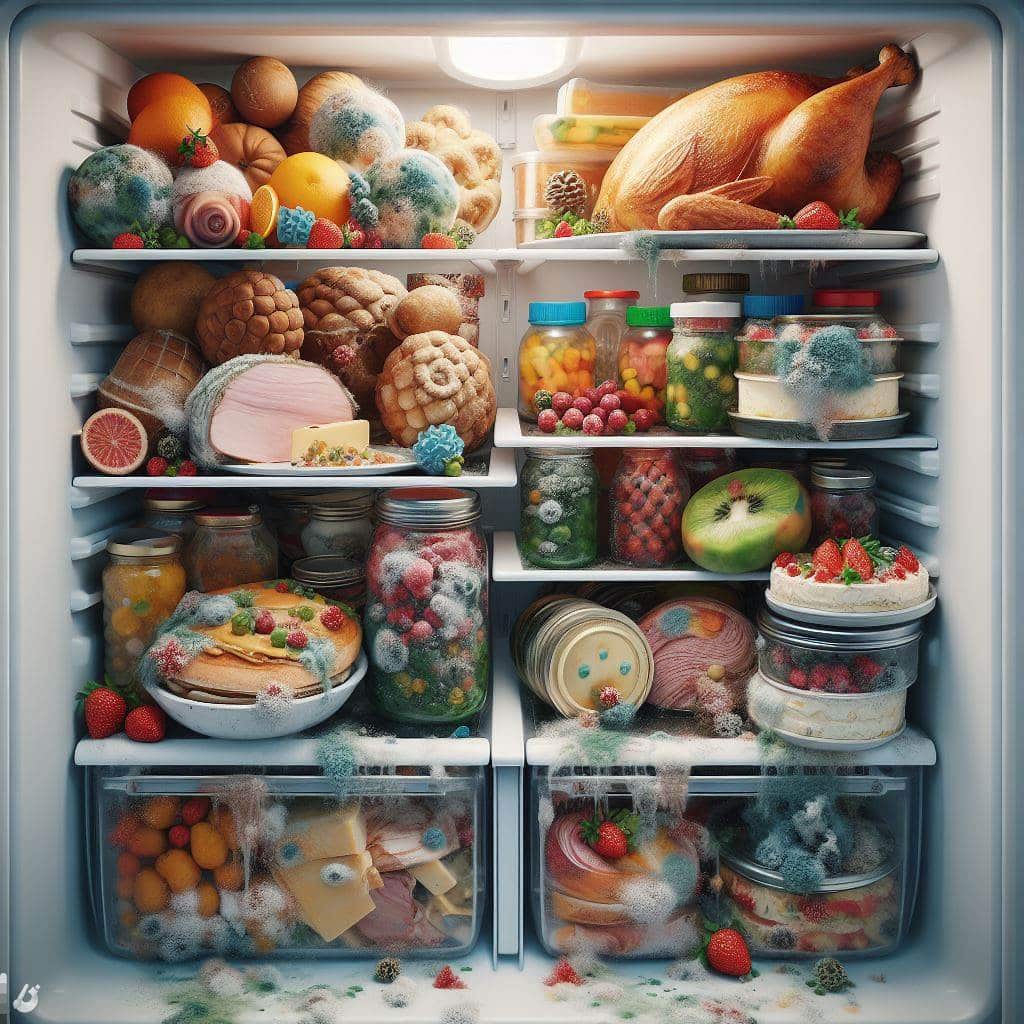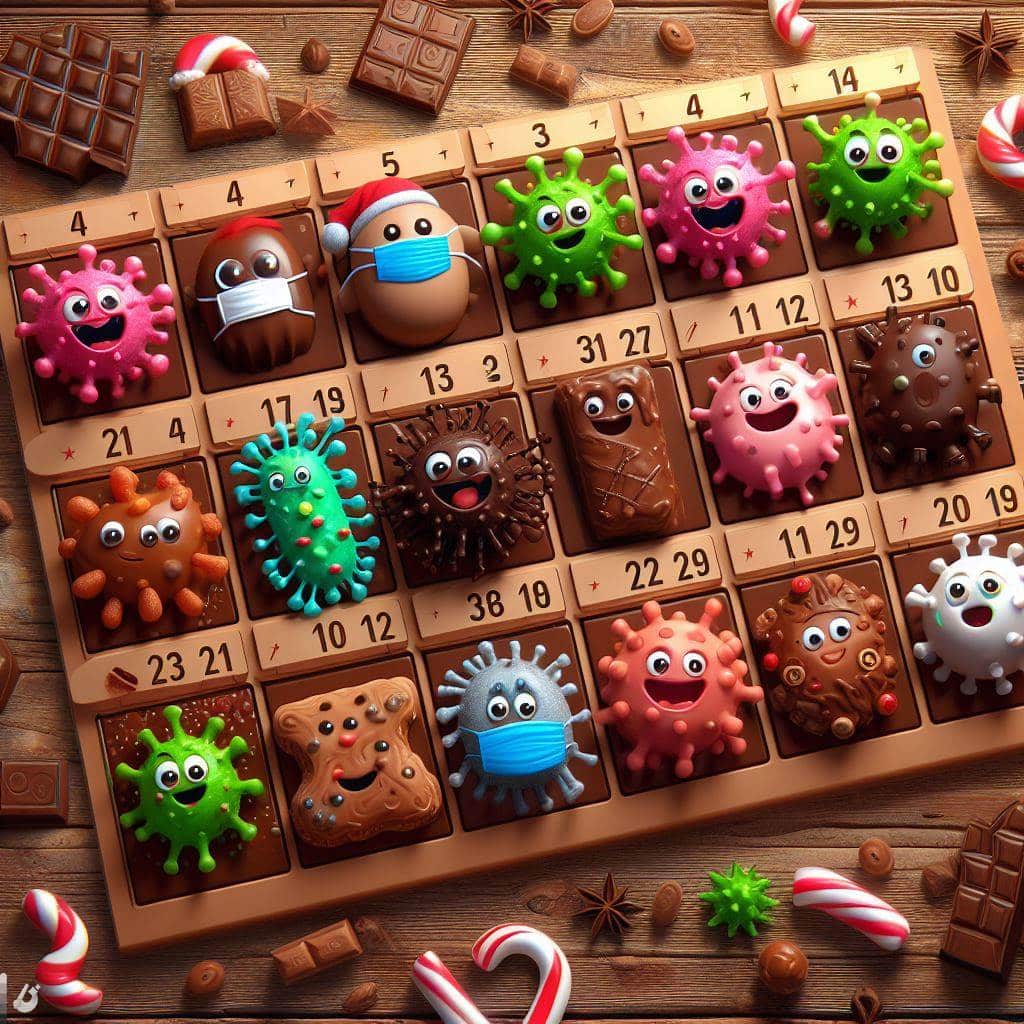By Gill Dando – RQA Group Principal Consultant
‘Tis the season to be jolly, but nothing dampens the holiday spirit faster than a badly placed piece of alliteration in the form of a “Christmas Culinary Catastrophe”, hereon known as the dreaded 3Cs! As we prepare to deck the halls and fill our tables with festive feasts, it’s essential to keep an eye on food safety to ensure the only thing we’re unwrapping is the joy of the season. Of course, this applies to those at work in the factories for which this can be the busiest and most stressful time of year but also let us not forget to take those messages home too.
In this merry blog post, we’ll take a light-hearted journey through the potential food safety risks during the Christmas period, drawing parallels with UK food incidents that have the potential to spoil the fun!
The Joyful Feast: A Recipe for Safety Success:
- Turkey Troubles

Picture this: A golden turkey takes centre stage at your Christmas feast. The food manufacturer has taken great care to ensure the turkey arrives with you (the consumer) in a safe and quality condition… However, undercooked poultry can turn your holiday joy into a stomach-churning nightmare. To avoid this, always make sure plenty of time is left to safely defrost frozen meats. Many of us hardened food safety professionals know all too well of the spikes when we get an unseasonable warm Christmas (or for our antipodean friends that’s called business as usual).
Turkeys left out to defrost in a garage or pantry as the fridge is crammed full are a minefield of risks for bacterial proliferation and toxin development so, please be careful. Of course, equally so when cooking, please ensure your turkey reaches a minimum internal temperature of 75°C[1].
Top Tip = Invest in a reliable meat thermometer and check the temperature in the thickest part of the bird, avoiding contact with bones. We all do this at work in factories, quite often as a CCP check, but how often do we then do this at home? I know I do, but not sure if that makes me special or just a bit of a geek 😉.
The FSA have a lot of great information on their site to explain what to check for and why[2].
[1] Christmas food hygiene | Food Standards Agency
[2] Cooking your food | Food Standards Agency
2. Mince Pie Mayhem

Mince pies are a staple of Christmas, but what if they harbour a hidden danger? Just as a surprise ingredient can trigger a food recall, overlooking essential safety measures can result in unexpected issues in healthcare. We have seen recalls in the past with various foreign bodies from pieces of EVM (“extraneous vegetable matter”) and stones from the fruit mix being easily missed in the raw materials through to pieces of plastic or other foreign bodies coming in at the factory or home mixing bowl stages.
Both domestic and industry settings share the need for thorough checks and balances to ensure a smooth and safe eating experience. When baking mince pies, ensure that all ingredients are fresh, and if any allergens are present, make sure you know about them. Of course if you are a food manufacturer, in a factory setting, you must check labels are accurate and allergens are declared, and make sure you avoid any easily stopped incidents and unnecessary recalls.
Top Tip = Root out that Tupperware (other plastic box brands are available), find a matching lid (yes, I know this is the age old paradox…) and store those pies in a cool, dry place to prevent spoilage.
3. Stocking Stuffer Sweets: Salmonella Alert!
Who can resist the allure of festive sweeties? From liqueur filled truffles, advent calendar goodies, impulse purchase cookies & choccies to candy canes, the risk of foodborne illnesses like salmonella is ever-present. Just as a mislabelled treat can lead to a recall, so can underestimating the microbiological risk factor. We don’t have to tell you about the number of Salmonella in chocolate and confectionary recalls, especially during these periods of high factory throughput like Easter and Christmas, the stats are out there, and they are very costly to businesses and brands let alone the consumer.
This scenario really highlights the importance of meticulous planning. Of course, this can be one of, if not the busiest times of year for a food manufacturer and also typically aligns with staff holidays and seasonal illness absences. The pressures on factories to keep up with demand can be exhausting and balancing this hectic period with output margins versus the challenges mentioned can be close to impossible at times. Always remember though, it is never a sign of weakness to ask for help. If you need some specialist advice on managing microbial risks, optimising food safety without compromising too much on efficiency, or measuring your risk, we are always here at the end of the line to help if you need us. We understand it’s a busy time, we have been in your shoes and we are here for you!
Top Tip = When indulging in Christmas treats, be aware of recent recalls and check for any news regarding possible contamination events[3]. Ensure that products are from reputable sources and store them properly, keep an eye on those best before dates, to prevent any mystery illnesses over the holidays.
[3] Recalls and alerts | Food Standards Agency
4. Festive Leftovers
The joy of Christmas often extends beyond the day itself, with leftovers becoming a cherished part of the holiday experience. However, improper storage and handling can turn those delicious remnants into a breeding ground for foodborne illnesses.
In a factory environment we would never imagine leaving food out cooling for longer than the allotted time prescribed in our HACCP plans. Any excursion would be a call to QA and an NCR at least! So why any different at home? The need for ongoing vigilance to prevent post-celebration pitfalls is as real there as it is in any operational setting. When storing leftovers, they should be refrigerated within two hours of serving and consumed or frozen within a few days (make sure labels are freezer safe, or like me have a freezer full of mystery).

Top Tip = get yourself some decent labels and a permanent pen (anyone who has been on my training courses will know I love a sharpie) and label up those containers with dates to track freshness and ensure thorough reheating before consuming (back to that temperature probe guys!).
To Conclude...
As we wrap up our festive food safety journey, let’s toast to a Christmas filled with joy, laughter and, most importantly, safe and delicious feasts. By drawing parallels between the potential risks in our home kitchens to those at the operational factories in which many of us work (or at least buy our food via) we’re reminded that attention to detail, continuous improvement and a commitment to safety are essential ingredients for a truly happy and healthy celebration.
Additionally, as we become busier than ever, and this time of year can be super challenging for those of us working in manufacturing, don’t be afraid to ask for help, it is what we are here for!
So, as you embark on your yuletide culinary adventures, remember the food safety principles and banish the 3Cs, ensuring that the only surprises you encounter are the ones nestled beneath the tree, not lurking in your festive fare.
Merry Christmas and a safe, scrumptious celebration to all!


